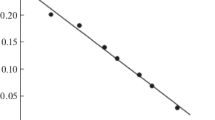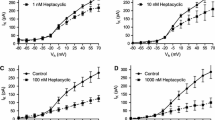Abstract
The murine leukemia cell lines L1210 and WEHI-3B show a very different sensitivity to the cholera toxin (CT).
Thein vitro growth of L1210 is completely inhibited by 10−8 M CT, while WEHI-3B growth shows the same inhibition at 10−11 M.
The analysis of membrane ganglioside pattern of the two cell lines shows that in L1210 cells the major component is the GM1a ganglioside while the monosialoganglioside fraction from WEHI-3B is entirely composed of gangliosides of the ‘b’ series among which GM1b is the more represented. The total cholera toxin binding capacity of the ganglioside extract from L1210 cells is more than hundred fold higher than that of WEHI-3B and this difference is also confirmed by the number of CT receptors/cell and by the binding of FITC-B subunit of CT on the cells. These surprising data are in conflict with the poor sensitivity to CT evidenced by L1210 compared to WEHI-3B cells.
In order to clarify this discrepancy we investigated the cAMP accumulation, the cell viability and the clonogenicity of these two leukemia cell lines following the treatment with CT and forskolin (FRSK).
The treatment of WEHI-3B cells with CT induces a dramatic increase of intracellular cAMP which highly correlates with cell death and the decrease of clonogenicity and this result is partially obtained by the treatment with FRSK, L1210 cells do not evidence significant cAMP accumulation neither with CT nor with FRSK treatment.
These data suggest that the different inhibiting effect of CT on WEHI-3B and L1210 cells does not correlate with their different pattern of gangliosides and the related toxin binding capacity. Further they indicate that the growth inhibition of WEHI-3B cells is closely related with a cAMP-dependent cell killing mechanism, while the inhibition of L1210 growth (produced by high concentration of CT) is mediated by a cAMP independent mechanism.
Similar content being viewed by others
References
Kuroki T: Induction by cholera toxin of synchronous divisionsin vivo in the epidermis resulting in hyperplasia. Proc Natl Acad Sci USA 78: 6958–6962, 1981
Lechner JF, Hausgn A, Autrup H, McClendon IA, Trump BF, Harris CC: Clonal growth of epithelial cells from normal adult human bronchus. Cancer Res 41:2294–2304, 1981
Rosengurt E, Legg A, Strang G, Courtenay-Luck N: Cyclic AMP: a mitogenic signal for Swiss 3T3 cells. Proc Natl Acad Sci USA 78: 4392–4396, 1981
Saito H, Sanai Y, Nagai Y: Cholera toxin enhances factor-dependent colony growth of murine mast cell progenitors. Exp Hematol 13: 261–266, 1985
Niles RM, Loewy B, Krah D: Differential sensitivity of normal and chemically transformed epithelial cells to cholera toxin. Cancer Res 41:4075–4079, 1981
Fuyama S, Naiki M, Sendo F: The mechanism of cholera toxin-induced suppression of natural killer cytotoxicity. Gunn 73:798–804, 1982
Cho-Chung YS, Clair T, Shepheard C, Bersgoffer B: Arrest of hormonedependent mammary cancer growthin vivo andin vitro by cholera toxin. Cancer Res 43:1473–1476, 1983
How PH, Bascom CC, Cunningham MR, Leof EB: Regulation of transforming growth factor beta-1 action by multiple transducing pathways: evidence for both G protein-dependent and-independent signaling. Cancer Res 49:6024–6031, 1989
Viallet J, Sharoni Y, Fricht H, Jensen RJ, Minna JD, Sausville EA: Cholera toxin inhibits signal transduction by several mitogens and thein vitro growth of human small cells lung cancer. J Clin Invest 86:1904–1912, 1990
Enomoto K, Gill DM: Cholera toxin activation of adenylate cyclase. J Biol Chem 255:1252–1258, 1980
Holmgren J: Action of cholera toxin and the prevention and treatment of cholera. Nature 292:413–417, 1981
Smets LA, VanRoi H: Mitogenic and anti-mitogenic effect of cholera toxin-mediated cyclic AMP levels in 3T3 cells. J Cell Physiol 133: 395–399, 1987
Spiegel S: Fluorescent derivatives of ganglioside GM1 function as receptor for cholera toxin. Biochemistry 24:5947–5952, 1985
Fishman P: Role of membrane gangliosides in the binding and action of bacterial toxins. J Membr Biol 69:85–97, 1982
Griffiths SL, Finkelstein RA, Critchley DR: Characterization of the receptor for cholera toxin andEscherichia coli heat-labile toxin in rabbit intestinal brush borders. Biochem J 238:313–322, 1986
Masserini M, Freire E, Palestini P, Calappi E, Tettamanti G: Fuc-GM1 ganglioside mimics the receptor of GM1 for cholera toxin. Biochemistry 31:2422–2426, 1992
Pacuszka T, Bradley RM, Fishman PH: Neoglycolipid analogues of ganglioside GM1 as functional receptors of cholera toxin. Biochemistry 30:2563–2570, 1991
Nakamura K, Suzuki M, Inagaki F, Yamakawa T, Suzuki A: A new ganglioside showing choleragenoid-binding activity in mouse spleen. J Biochem 101:825–835, 1987
Holmgren J, Lindblad H, Fredman P, Svennerholm L, Myrvold A: Comparison of receptors for cholera andEscherichia coli enterotoxins in human intestine. Gastroenterology 89:27–35, 1985
Pessina A, Mineo E, Masserini M, Neri MG, Cocuzza CE: Inhibition of murine leukemia (WEHI-3B and L1210) proliferation by cholera toxin B subunit. Biochem Biophys Acta 1013:206–211, 1989
Donta ST, Moon HV, Whipp SC: Detection of heat-labile enterotoxin with the use of adrenal cells in tissue culture. Science 183:334–336, 1974
Tettamanti G, Bonali F, Marchesini S, Zambotti V: A new procedure for the extraction, purification and fractionation of brain gangliosides. Biochem Biophys Acta 296:160–170, 1973
Chigorno V, Sonnino S, Ghidoni R, Tettamanti G: Densitometric quantification of brain gangliosides separated by two dimensional thin layer chromatography. Neurochemistry Int 4:397–403, 1982
Sanai Y, Ogawa Y, Naggay Y: Enzyme-linked immunosorbent assay (ELISA) for detection of antibodies against glycosphingolipids and its application to patients with systemic lupus erythematosus. Jpn J Exp Med 51:309–316, 1981
Svennerholm L: Quantitative estimation of sialic acids. II. A colorimetric resorcinol-hydrocloric acid method. Biochem Biophys Acta 13:856–858, 1957
Ghidoni R, Sonnino S, Tettamanti G, Baumann N, Reueter G, Schauer R: Isolation and characterization of a trisialoganglioside from mouse brain, containing 9-0-acetyl-neuraminic acid. J Biol Chem 255: 6990–6995, 1980
Muthing I, Muhlradt PF: Detection of gangliosides of the GM1b type on high performance thin layer chromatography plates by immunostaining after neuraminidase treatment. Anal Biochem 173: 10–17, 1988
Breimer M, Karlsson EA, Samuelsson BE: Characterization of a blood group H type pentaglycosylceramide of human pancrease based on a type I carbohydrate chain. J Biol Chem 256:3810–3816, 1981
Wu G, Ledeen R: Quantification of gangliotetraose with cholera toxin. Anal Biochem 173:368–375, 1988
Van Zoelen EJJ: Receptor-ligand interaction: a new method for determining binding parameters without a priori assumptions of non specific binding. Biochem J 262:549–556, 1989
Pessina A, Brambilia P, Mocarelli P: Surface antigen on Ehrlich ascites tumor cells. Biomedicine 33:105–109, 1980
Bradford M: A rapid sensitive method for the quantitation of microgram quantities of protein utilizing the principle of protein dye binding. Anal Biochem 72:248–252, 1976
Pessina A, Mineo E, Gribaldo L, Mancina G, Neri MG, Moran L, Cleary I, Clynes M: Susceptibility of leukemia cell lines to quinolones and induction of resistance to ciprofloxacin in WEHI-3B(D+) leukemia cells. Cancer J 6: 291–297, 1993
Mosmann T: Rapid colorimetric assay for cellular growth and survival: application to proliferation and cytotoxicity assays. J Immunol Meth 65: 55–63, 1983
Giuliani A, Calappi E, Pessina A, Mineo E, Neri MG, Masserini M: Sensitivity to inhibition by cholera toxin of two murine leukemia cell lines having different ganglioside patterns. XVIth Int Carbohydrate Symp, Abstr B107, July 5–10, Paris, France, 1992
Yohe HC, Macala LJ, Giordano G, McMurray WJ: GM1b and GM1b-galNac: major gangliosides of murine derived macrophage like WEHI-3 cells. Biochem Biophys Acta 1109: 210–217, 1992
Van Heyningen S: The interaction of cholera toxin with gangliosides and the cell-membrane. Current Topics in membranes and transport 18: 445–471, 1983
Rae PA, Gutmann NS, Tsao J, Schimmer BP: Mutations in cyclic AMP-dependent protein kinase and corticotropin (ACTH)-sensitive adenylate cyclase affect adrenal steroidogenesis. Proc Natl Acad Sci USA 76: 1896–1900, 1979
Insel PA, Bourne HR, Coffino P, Tomkins GM: Cyclic AMP-dependent protein kinase: pivotal role in regulation of enzyme induction and growth. Science 190: 896–898, 1975
Lanotte M, Riviere JB, Hermouet S, Houge G, Vintermyr OK, Gjertsen BT, Doskeland SO: Programmed cell death (Apoptosis) is induced rapidly and with positive cooperativity by activation of cyclic adenosine monophosphate-kinase I in a myeloid leukemia cell line. J Cellular Physiol 146: 73–80, 1991
Vintermyr OK, Gjersten BT, Lanotte M, Doskeland SO: Microinjected catalytic subunit of cAMP-depenent protein kinase induces apoptosis in myeloid leukemia (IPC-81) cells. Exp Cell Res 206: 157–161, 1993
Nambiar MP, Oda T, Chen C, Kuwazuru Y, Wu HC: Involvement of the Golgi region in the intracellular trafficking of cholera toxin. J Cell Physiol 154: 222–228, 1993
Francis ML, Moss J, Fitz TA, Mond JJ: cAMP independent effects of cholera toxin on B cell activation. J Immunol 145: 3162–3169, 1990
Anastassiou ED, Yamada H, Francis ML, Mond JJ, Tsokos GC: Effects of cholera toxin on human B cells. J Immunol 145: 2375–2380, 1990
Author information
Authors and Affiliations
Rights and permissions
About this article
Cite this article
Giuliani, A., Calappi, E., Mineo, E. et al. The different inhibiting effect of cholera toxin on two leukemia cell lines does not correlate with their toxin binding capacity. Mol Cell Biochem 152, 103–112 (1995). https://doi.org/10.1007/BF01076072
Received:
Accepted:
Issue Date:
DOI: https://doi.org/10.1007/BF01076072




